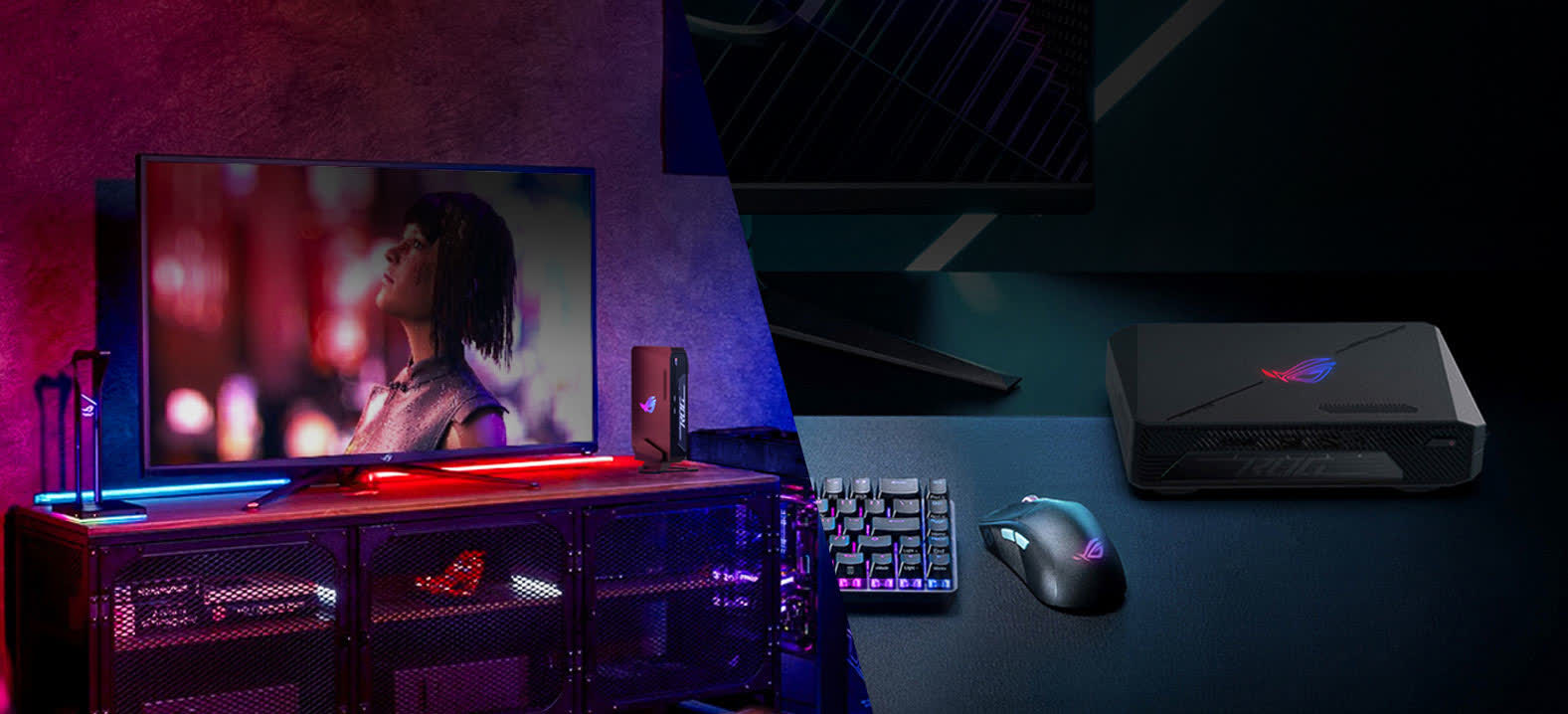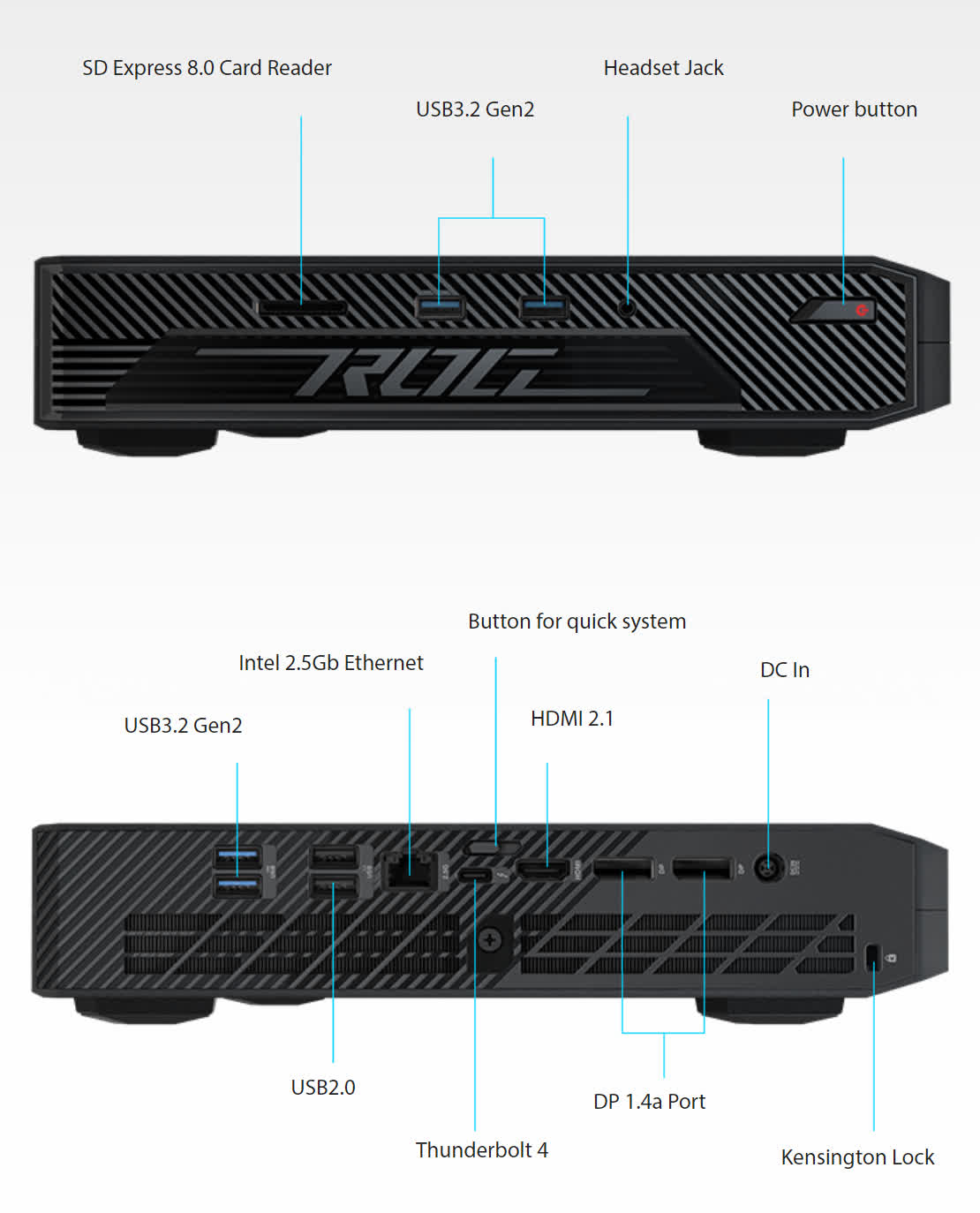Bottom line: Intel ceased to develop new NUC small form factor systems in 2023, with Asus taking over to advance the platform with updated designs and hardware components. Now, the company is ready to offer its first gaming-oriented NUC under the ROG brand, featuring up to an RTX 4070 mobile GPU.

Asus agreed to build its own NUC PCs under a non-exclusive agreement with Intel, and the original line of mini PCs is now evolving further by merging with the ROG family of gaming products. After teasing the new devices a few months ago, the PC manufacturer is now officially launching its first high-end ROG NUC PCs.
Asus describes the mini PCs as ultrasmall yet "ultrapowerful" systems, offering ample performance for gamers, enthusiasts, and creators alike. The ROG NUC line features either a Core Ultra 9 or Core Ultra 7 Intel mobile CPU, coupled with a GeForce RTX 4070 or RTX 4060 discrete graphics processor of the laptop variety. Memory configuration includes 16 GB of DDR5, which can be upgraded up to 64 GB (32 GB x 2).
Storage includes a 512 GB M.2 2280 PCIe Gen4 SSD, with three additional empty M.2 slots available for further expansion.
The ROG NUC offers two wireless connectivity options (Wi-Fi 6E and Bluetooth 5.3) and a wired 2.5G Intel LAN connection. Available ports include an SD Express card reader, several USB ports (up to USB 3.2 Gen2), one HDMI port, and two DisplayPort 1.4a ports for monitors.
ROG NUC mini PCs are compatible with the ROG Raikiri Pro controller for "console-like" gaming on the sofa, the manufacturer says. They also support Aura Sync RGB tech to customize gaming setups with additional ROG peripherals and devices (and some in-house lighting effects).
While boasting the gaming capabilities of Intel's Core Ultra 9/7 hybrid architecture for Windows 11 x64, Asus highlights how the ROG NUCs can offer plenty of computing power for "AI professionals" and LLM researchers as well. The GeForce RTX 40 GPU series includes specialized Tensor Cores capable of properly accelerating machine learning algorithms. However, 16 GB of RAM is likely the bare minimum needed to enjoy a satisfying chatbot experience without relying on the cloud.
Using cutting-edge components in newer gaming systems isn't cheap, and the ROG NUC line will come at a premium.
The Core Ultra 7 model is listed with a suggested price of $1,630, while the Core Ultra 9 model has a $2,200 price tag. Neither system is yet in stock on the Asus e-store.
First Asus ROG NUCs feature Intel CPUs and discrete Nvidia RTX GPUs
